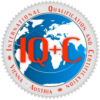ISO 22301:2019(en)
Contents of the e-Workshop
1. Video Course Master Class
Immerse yourself in our engaging Video Course Master Class, where industry experts will guide you through every aspect of Business Continuity Management. Learn best practices, real-world case studies, and practical insights to excel as a Business Continuity Manager.
2. Internal Audit Guide
Discover the secrets of effective internal auditing with our comprehensive Internal Audit Guide. Learn how to assess and improve your organization’s business continuity practices, ensuring compliance with ISO 22301 and driving continual improvement.
3. Toolkit: Detailed Templates, Checklists, and Process Documents
Our exclusive Toolkit offers a treasure trove of valuable resources to streamline your Business Continuity Management efforts. Access detailed templates, checklists, and process documents to implement ISO 22301 seamlessly within your organization.
4. E book-Mastering Business Continuity-Part 1
A Comprehensive Guide to ISO 22301 Implementation
5. Online Exam
Prove your expertise and earn the prestigious “Business Continuity Manager” certificate by acing our Online Exam. Showcase your mastery of Business Continuity Management and gain recognition for your skills.
6. Certificate “Business Continuity Manager
Upon successfully completing the e-workshop and passing the Online Exam, you will receive the highly sought-after “Business Continuity Manager” certificate. Showcase your expertise and open new career opportunities.






